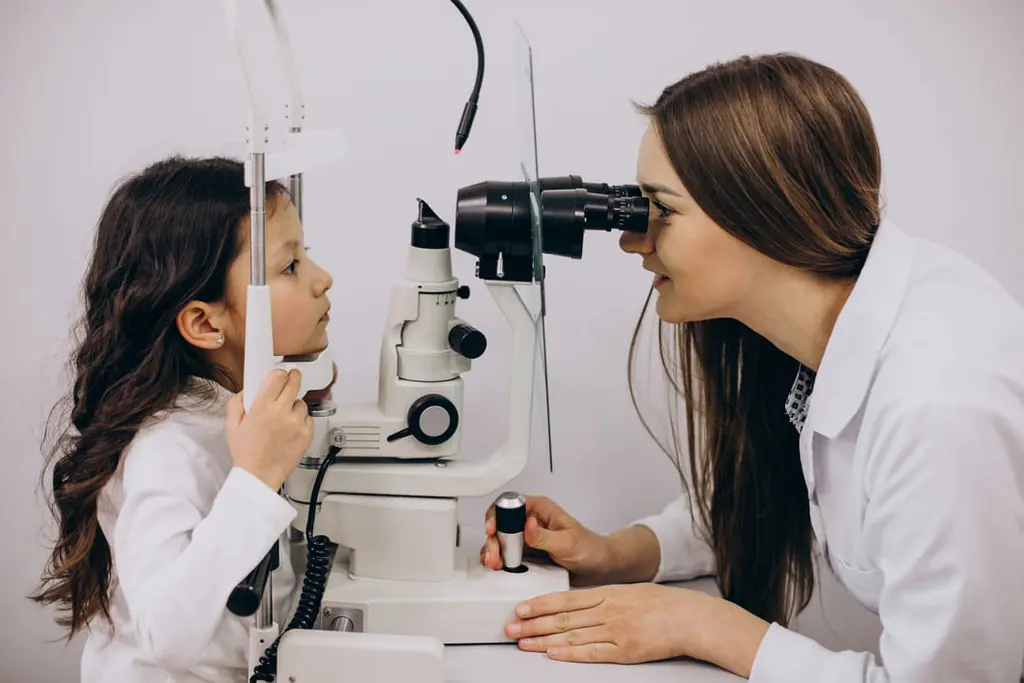Department
Ophthalmology

Our Ophthalmology department provides expert care for all eye conditions, from routine checkups to complex surgeries. Whether it’s cataracts, glaucoma, or vision correction, our experienced ophthalmologists use the latest technology to ensure you get the best care possible to preserve your vision.
Ophthalmology department scope:
1. Basic Eye Examination
- Visual Acuity Test: Uses a Snellen or LogMAR chart to measure clarity of vision.
- Refraction Test: Determines the need for glasses or contact lenses.
- Pupil Examination: Assesses pupil size, shape, and response to light.
2. Slit Lamp Examination
- Uses a microscope with a high-intensity light source to examine the anterior segment (cornea, lens, anterior chamber, conjunctiva).
3. Tonometry
- Measures intraocular pressure (IOP) to screen for glaucoma.
- Types: Goldmann applanation tonometry (most accurate), non-contact tonometry (air puff test).
4. Fundoscopy (Ophthalmoscopy)
- Examines the retina, optic nerve, and blood vessels.
- Types: Direct and indirect ophthalmoscopy.
5. Optical Coherence Tomography (OCT)
- Provides cross-sectional imaging of the retina and optic nerve.
- Useful for diagnosing glaucoma, macular degeneration, diabetic retinopathy.
6. Fluorescein Angiography (FA)
- Uses a fluorescein dye injected into a vein to highlight blood flow in the retina.
- Helps detect diabetic retinopathy, macular degeneration, vascular occlusions
7. Indocyanine Green Angiography (ICG)
- Similar to FA but better for imaging choroidal blood vessels.
- Used in central serous retinopathy, polypoidal choroidal vasculopathy.
8. Ultrasonography (B-scan and A-scan)
- B-scan: Used when the retina cannot be visualized directly (e.g., in dense cataracts or vitreous hemorrhage).
- A-scan: Measures axial length, often for cataract surgery calculations.
9. Visual Field Testing (Perimetry)
- Measures peripheral vision loss.
- Used to diagnose and monitor glaucoma, optic neuropathies, stroke-related
11. Corneal Topography & Tomography
- Maps the corneal surface curvature.
- Used for keratoconus, LASIK planning, corneal dystrophies.
12. Optical Biometry
- Accurate measurements of axial length and IOL power Calculations for advanced technology PCIOL
1. Clinical Services
- General Ophthalmology: Diagnosis and treatment of common eye conditions like conjunctivitis, dry eyes, and allergies.
- Pediatric Ophthalmology: Treatment of childhood eye diseases such as strabismus, amblyopia (lazy eye), and congenital cataracts.
- Neuro-Ophthalmology: Management of vision problems related to neurological disorders like optic neuritis, brain tumors, and stroke-related vision loss.
- Retina Serviecs : Diagnosis and treatment of medical and surgical diseases of retina
2. Surgical Services
- Cataract Surgery: Removal of clouded lenses and replacement with artificial intraocular lenses.
- Glaucoma Surgery: Techniques to reduce intraocular pressure, by laser therapy and medical management
- Retinal Surgery: Treatment for retinal detachment, diabetic retinopathy, and macular membranes, vitreous hemorrhage and others
- Oculoplastic Surgery: Cosmetic and reconstructive procedures for eyelids, tear ducts, and orbital structures.
Meet our experts
AbOUT US
DEPARTMENTS
© 2025 Abeer. All rights reserved.
